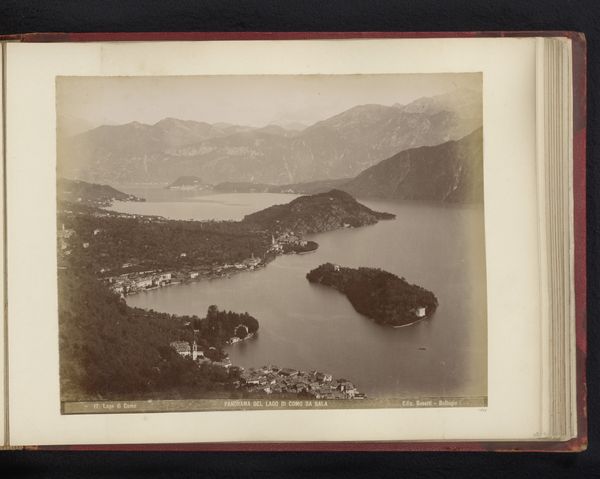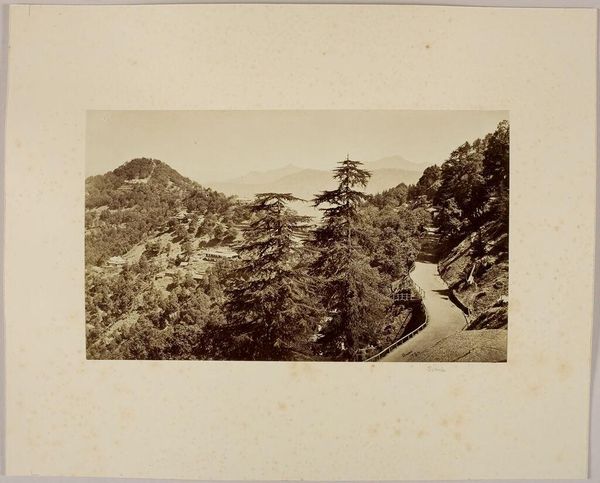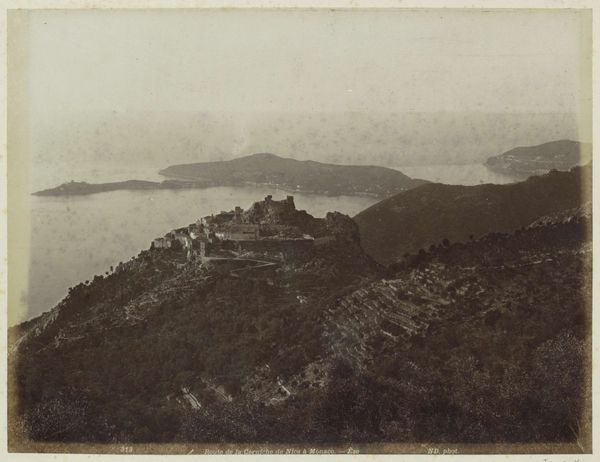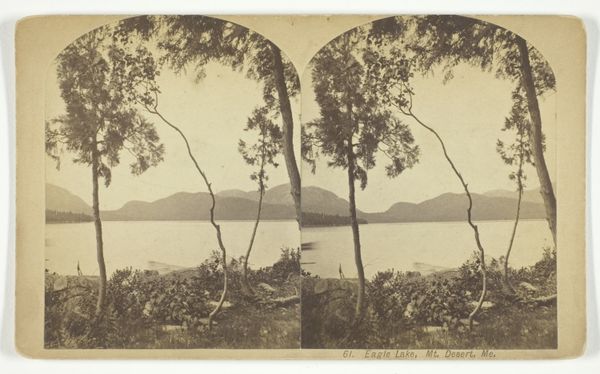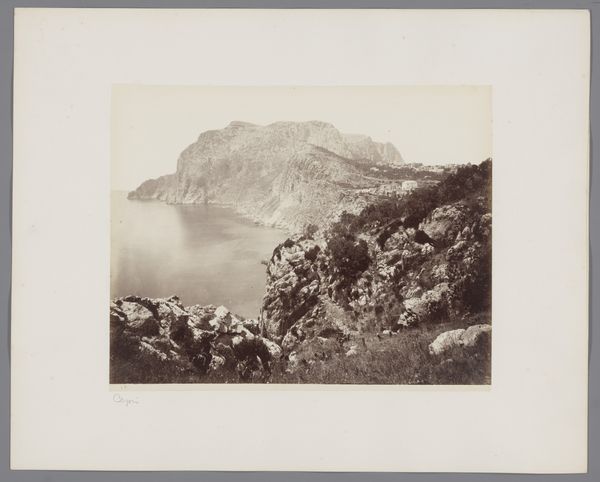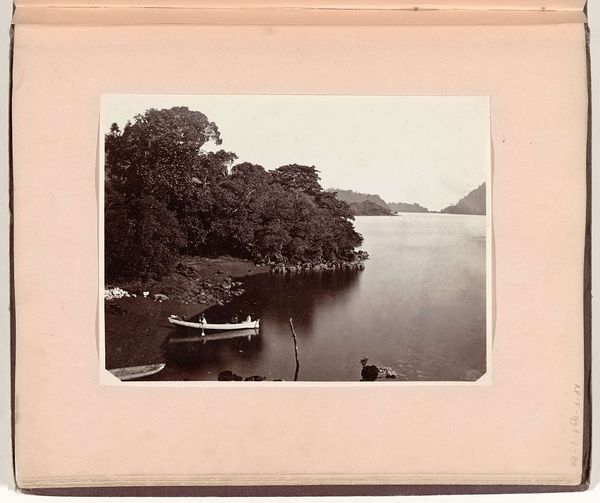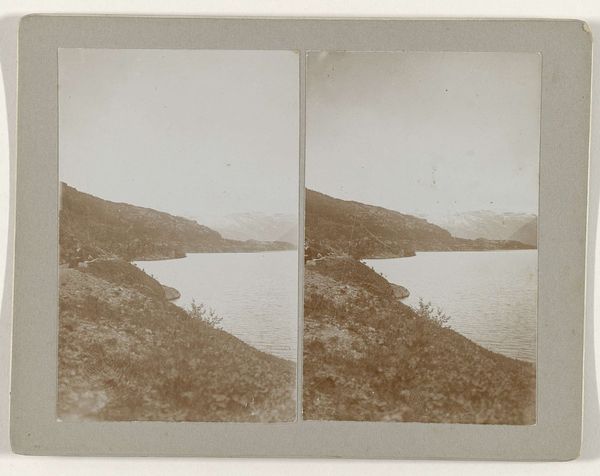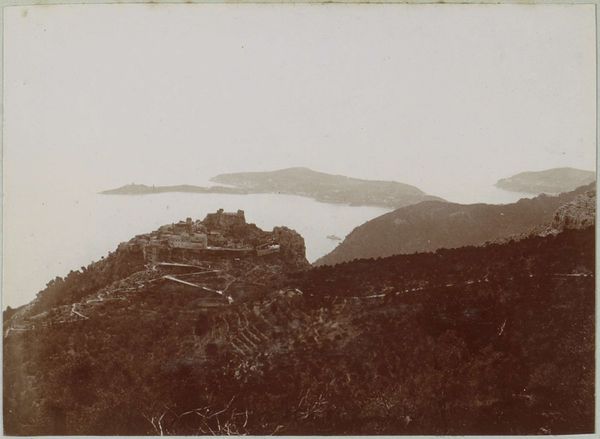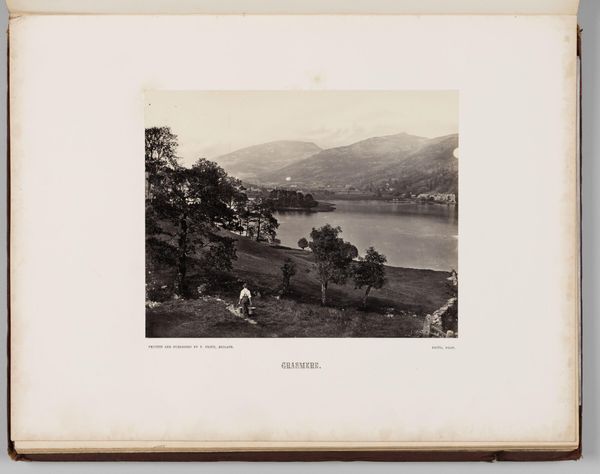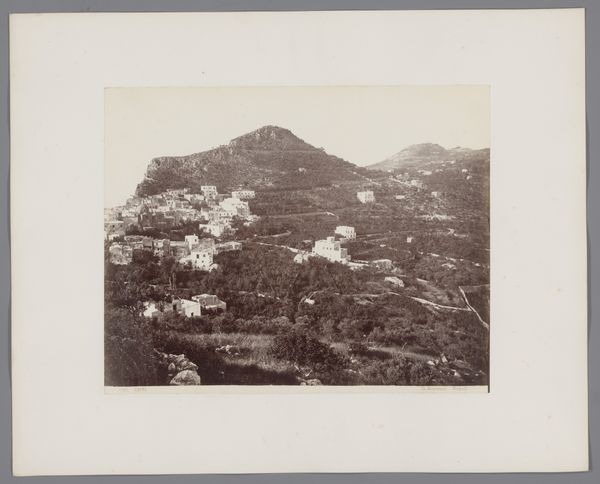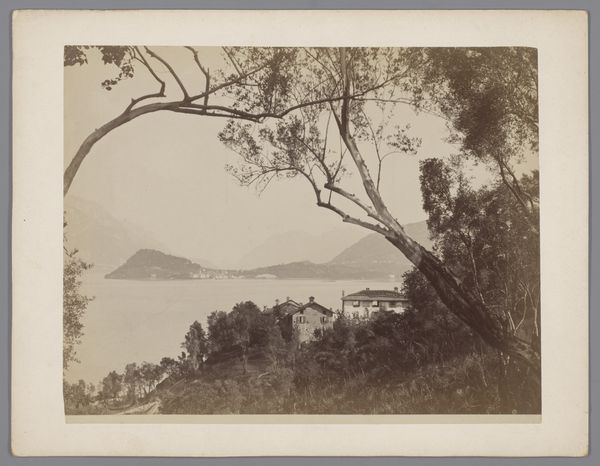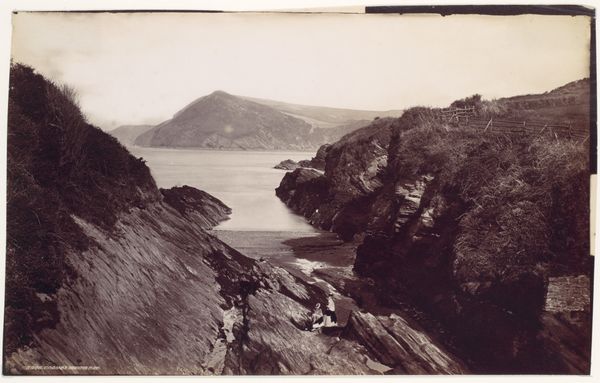
photography, albumen-print
#
pictorialism
#
landscape
#
photography
#
albumen-print
Dimensions: height 210 mm, width 278 mm
Copyright: Rijks Museum: Open Domain
Curator: Before you, we have "Loch Katrine and Ellen Isle and Ben Venue," a pre-1889 albumen print by T. & R. Annan & Sons. It's a remarkable landscape, what strikes you most immediately about it? Editor: The soft tonality! That sepia wash creates an incredibly tranquil mood. The layering is fascinating—from the dark foreground foliage to the pale, almost dreamlike mountain in the distance. Curator: Absolutely. The pictorialist style is so evident here. Annan wasn't just documenting a scene; he was crafting an aesthetic experience. The choice of albumen print, known for its delicate gradations, really emphasizes that artistic intention. Editor: Notice how the composition leads your eye? From those dark trees, across the loch, to that small island—Ellen Isle—and finally up to Ben Venue. The placement isn’t accidental; it directs your gaze intentionally, creating rhythm. Curator: And Loch Katrine held a very specific place in the Victorian imagination. It was romanticized through literature, most famously in Sir Walter Scott's "The Lady of the Lake". Annan's photograph taps into that pre-existing cultural narrative, inviting viewers to experience this idealized version of the Scottish Highlands. Think about the social implications here; travel photography opened up these once-remote places to a wider audience. Editor: You’re right; that romantic association clearly adds to the reading. I'm also struck by the contrasts. Sharpness and blur—the detail in the vegetation versus the almost hazy rendering of the mountain, give a sense of depth but also something uncanny. Curator: I agree; that blurring creates an ethereal feel, it distances the photograph from simple topographic document. Editor: Ultimately, it feels less like a precise record of a place and more like an invocation of a mood, or an emotion felt about that place. The composition and tonality feel very controlled and serve this atmospheric quality above all else. Curator: Yes, seeing this image prompts us to consider how photography, even in its early days, wasn't merely mirroring reality, but was actively involved in shaping perceptions of place, memory, and identity within a larger historical and cultural context. Editor: An astute observation. Focusing on the aesthetic experience as Annan intended gives this image its long-lasting appeal and power.
Comments
No comments
Be the first to comment and join the conversation on the ultimate creative platform.

